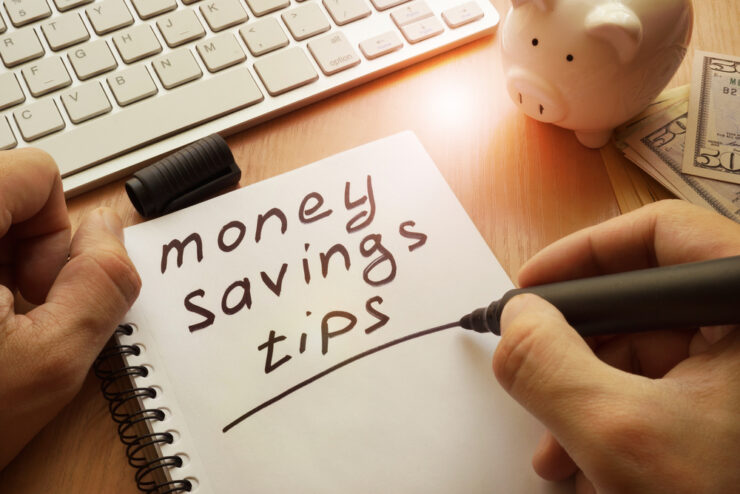Switch To Cash
Start using cash for purchases like gas, groceries, and dining out. You can use debit or credit cards to pay bills, but you shouldn’t use it for other types of spending. When you pay with a card, it’s harder to process what you’re spending. You won’t have the same issue when you pay with cash. On top of that, you’ll be able to stop spending once you run out of cash.
Start Saving Small Amounts Each Week
Whenever you receive your paycheck, you should put a small amount of that check into your savings account. You could set aside £20 or even £40 each week. Since this transfer is on the smaller side, it shouldn’t have a big impact on your overall finances. However, those savings can add up over time! It’s a great way to increase your savings.
Spend More Time At Home
When you go out of the house, you’re more likely to spend money you don’t need to spend. Instead of using the food in your pantry, you’ll dine out at a restaurant. You might be tempted to make an impulse purchase from a store you visit. When you’re out of the house, you’ll always be tempted to spend more. Spending time at home will give you the chance to bond with your loved ones. There’s plenty of entertainment you can enjoy without spending a thing.
Don’t Sign Up for Sales Emails
There are lots of companies out there that want your money. When you’re getting advertisements for new and exciting products in your inbox, it can be hard to resist the urge to spend money. If you avoid signing up for these emails, you won’t be tempted, and it will be easier to limit what you spend.
Wait To Buy The Things You Want
Are you interested in purchasing something you don’t need? If so, put it on a list, and wait for 30 days. During that period, you should only purchase necessities. Keep adding items to the list whenever you’re tempted. After the 30 days are over, you can purchase any of the items on your list. You may still want to purchase some of those items, but it’s likely that you’ll spend less if you give yourself the chance to think things over.
Start Cooking Your Own Meals
It’s easy to order delivery, grab takeout, or go out to eat. However, preparing your own meals can be easy too. For example, you could use frozen vegetables and the protein of your choice to make a quick stir fry. Buy a pre-made crust, sauce, cheese, and other toppings, and you’re ready to make your own pizza. Toss a few ingredients in the slow cooker and wait for your meal to finish. You’ll save money eating this way, and you’ll improve your diet too.
Prioritize Exercise
Medical bills can be expensive, which is why you’ll want to make sure you keep yourself healthy. Regular exercise is one of the best ways to maintain your health.
Try Out The Envelope System
This is similar to sticking to cash for spending. However, your cash will be divided into various categories and placed in envelopes. Your categories could include groceries, gas, money for dining out, and other types of discretionary purchases. Once the money in those envelopes is exhausted, you won’t be able to spend more in those categories until you’ve added more money to those envelopes.
Regularly Discuss Finances With Your Significant Other
When you’re in a relationship with someone, you need to make sure the two of you are on the same page when it comes to finances. You should work to come up with a spending plan and decide how you want to handle impulse purchases. Talk about the balances in your checking and savings accounts and the bills that have been paid and still need to be paid. If you talk about finances with your significant other for 20 minutes each week, it will be easier for the two of you to maintain good financial health.
If you are hit with a financial emergency consider a short term loan, for example Loanza.co.uk can help with bad credit loans.
Track Spending On Spreadsheets
There are many costly programs that can help you track your financial information, such as Quicken or MS Money. However, you don’t need to invest in software to keep track of your funds. There are plenty of free options available to you. For example, you can use Google Docs and Spreadsheet to build a customized spreadsheet that tracks all your spending. You can track the date of your transactions, the amount you’re spending, and track your balance. You can even create a field for memos. It’s a simple and free way to take charge of your finances. Test

